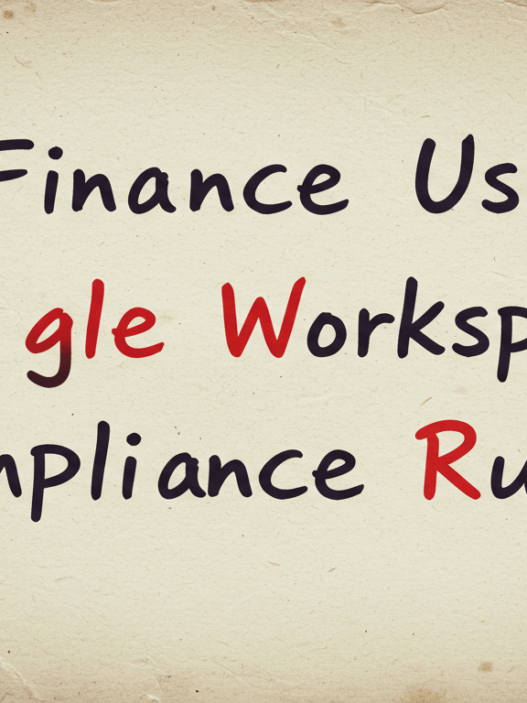TLDR: The article outlines a change management methodology for successfully implementing Google Workspace, emphasizing a four-phase journey: Excite, Enable, Expand, and Embed. It highlights four key work streams: Sponsorship, Organizational Analysis, Communications, and Training. By focusing on these phases and strategies, organizations can ensure a smooth transition, encourage user adoption, and foster a collaborative environment.
In today’s fast-paced digital world, organizations need to adapt to change to stay competitive. Effectively managing these changes is vital, especially when introducing new technologies like Google Workspace. A well-planned change management strategy ensures a smooth transition, encourages user adoption, and builds a collaborative environment.
The Google Workspace community has collaborated to tackle change management challenges, sharing effective methods and customer experiences in managing organizational changes, particularly for hybrid work environments adopting Google Workspace.
Embarking on Change: A Four-Step Journey
The path to long-term success with Google Workspace involves four key phases:
- Spark Interest (Excite): Generate excitement by building sponsorship, enthusiasm, and anticipation for the upcoming change. Communicate the vision and benefits of Google Workspace to create excitement.
- Making it Work (Enable): Focus on deploying Google Workspace services and ensuring all users can use the new platform effectively. Provide the necessary tools, resources, and support for a seamless transition.
- Growth and Guidance (Expand): Establish a dedicated sponsorship team to champion the change. Conduct training workshops to enhance user skills and manage support to address any issues.
- Solidifying Success (Embed): Measure the progress of Google Workspace adoption. Share success stories to motivate users, and provide self-help resources to support ongoing learning and improvement.

Each phase is crucial for setting users up for success. Don’t overlook early preparation and communication, or analyzing success metrics long after the go-live date.
Key Strategies for Managing Change
Google Workspace’s change management methodology incorporates four essential strategies to help an organization understand the change, build skills with the new technology, and commit to using it to improve work processes:
Champions of Change (Sponsorship):
Identify key sponsors within the organization to drive engagement and influence end-users. These sponsors should include:
- Executive Sponsors (Leaders): Spearhead the change effort by allocating resources, aligning leadership, and addressing resistance.
- Business Leaders and Managers (Decision-Makers): Provide department-specific support and leadership to ensure the successful adoption of Google Workspace within their teams.
- Google Guides (Change Agents): Early adopters who help scale and accelerate change efforts across various business groups.
Understanding Your Organization (Organizational Analysis):
Before implementing changes, conduct a thorough analysis to understand who will be affected and how. Consider factors such as:
- User locations
- Language preferences
- Current collaboration habits
This allows tailoring the change management approach effectively.
Keeping Everyone in the Loop (Communications):
Develop a comprehensive communication plan to keep users informed about the vision and benefits of the change.
- Messaging: Clearly explain why the organization is adopting Google Workspace and how it will benefit users, addressing their concerns and highlighting the advantages. Focus on answering, “What’s in it for me?” and “How will this make my job better?”.
- Marketing: Use Google’s brand to create fun, engaging, and simple communications that ease potential stress related to the change.

Communication Best Practices:
- Make communication materials fun and engaging.
- Use simple and compelling language.
- Ensure communications are “two-way” by giving employees a channel to provide feedback.
- Start communications early and continue consistently.
- Engage employees or Google Guides in designing, localizing, and distributing communication materials.
- Use as many channels as possible (online and offline).
- Allow time for translation and review.
Training and Support (Training):
Implement a training strategy that caters to the diverse needs of users. Offer customized training through methods like live webinars, recorded videos, and self-service documentation.
Training Best Practices:
- Create a central hub where users can find all the information and materials they need for the transition, such as a Google Site.
- Focus training on the value and benefits, not just the features, by connecting training to relevant practices and use cases for each user group.
- Deliver training before deployment, as close as possible to the go-live date, with more than 50% of training after go-live.
Bringing It All Together
Align activities and communications within each phase and strategy to ensure users receive the support they need throughout the change process. Addressing questions and concerns at each stage helps build confidence and preparedness.
For those currently using other systems and looking to switch, a successful Google Workspace implementation requires not only change management but also a well-executed migration strategy, further detailed in our article Google Workspace Migration A Strategic Approach to Enhanced Productivity.
Effective change management is essential for successfully adopting Google Workspace and achieving long-term success. By understanding the four phases and key strategies, organizations can create a supportive environment that empowers users to embrace new ways of working and drive meaningful transformation.
Sources: Google Workspace Blog, Google Cloud Community.



















